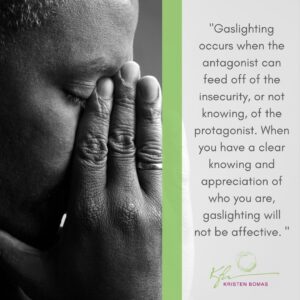 The term “gaslighting” has become very popular today. It is used to describe a manipulative situation where the antagonist comfortably denies the experience of the protagonist. Today it is commonly used with a negative connotation. In its negative usage it is a type of abuse that leaves the protagonist in a state of doubt, confusion or fear they are losing their mind. This was a term developed as a result of a play (Gas Light 1938) that later became a movie (Gaslight 1944).
The term “gaslighting” has become very popular today. It is used to describe a manipulative situation where the antagonist comfortably denies the experience of the protagonist. Today it is commonly used with a negative connotation. In its negative usage it is a type of abuse that leaves the protagonist in a state of doubt, confusion or fear they are losing their mind. This was a term developed as a result of a play (Gas Light 1938) that later became a movie (Gaslight 1944).
Gaslighting is now commonly described in relationships that have some level of abuse. In that case it is used with intent to control another person’s strength through creating a doubt in their experience thereby creating doubt in their self. The doubt can further a feeling of dependence on the antagonist. This is part of the goal. In an abusive relationship the antagonist is dependent on the protagonist and does not want to lose them.
The protagonist who uses gaslighting as a means of manipulating the relationship may have some deep fears of not being good enough or of not being who people think they are. Those fears (and more) become frightening in the relationship and become the source of projection onto the other.
Gaslighting may also be used with a greater criminal intent. It can be used to create a great level of doubt in the protagonist. So much so, that the protagonist begins to feel they are losing their mind and doubt a lot of what they experience. For example: when the protagonist is reflecting on an event, the antagonist may constantly say, “What are you talking about? That didn’t happen!” It is also a form of gaslighting when, inside an abusive relationship, the antagonist plays a mean or scary trick or prank on the protagonist. The protagonist may be mildly traumatized by the experience and now is afraid to participate in that daily activity. A dramatic example is the movie “What Ever Happened to Baby Jane” where the sister (antagonist) taking care of her handicapped sister (protagonist) puts a dead bird inside the covered dinner dish she delivers to her. The protagonist is now afraid to take the cover off any of her next meals for fear she will see another dead animal. On a milder scale this can occur with more of a criminal intent to harm the protagonist.
There is a difference between gaslighting in an abusive relationship versus gaslighting with criminal intent. The latter does not show remorse and has intent to harm the mental comfort or health of the protagonist. In an abusive relationship the pattern of abuse is in control and the antagonist is operating out of their own fear. That does not mean, however, that the two are mutually exclusive. There can be situations where the abuser is of criminal intent.
For the protagonist, it is important to be aware of hearing phrases like “That didn’t happen” or “You are making that up, that’s not what happened.” Be aware of questions that cause you to doubt your words. For example, “What are you talking about?” Be conscious of anytime the antagonist initiates doubt within you. That doubt will start to creep into your daily thoughts and can eventually debilitate your ability to make decisions for your Self that doubt can then leave you dependent on the antagonist and willing to follow their lead. This is significant inside an abusive relationship.
For gaslighting to be affective, both parties must be externally focused. For the protagonist, if you are aware of your experience inside and you know your Self and what you are experiencing and what you wish to experience, the antagonist who wants to gaslight will fall short. This is easier said than done. Because to know your inner experience you must get to know YOU. Gaslighting occurs when the antagonist can feed off of the insecurity, or not knowing, of the protagonist. When you have a clear knowing and appreciation of who you are, gaslighting will not be affective. In fact, you will see it coming and call it what it is.
In conclusion, it is up to each of you to find the courage to go within and know YOU and what YOU wish to experience in this life and in your relationships. It is the purest way to live free from any gaslighting or abuse. On the in between, you can become aware of the abuse pattern and work with someone to master that pattern or challenge. It is in the mastery of the pattern that you will be free of being controlled by it.






